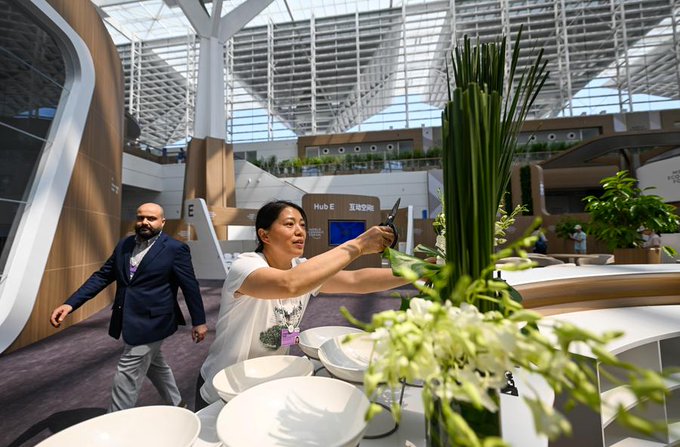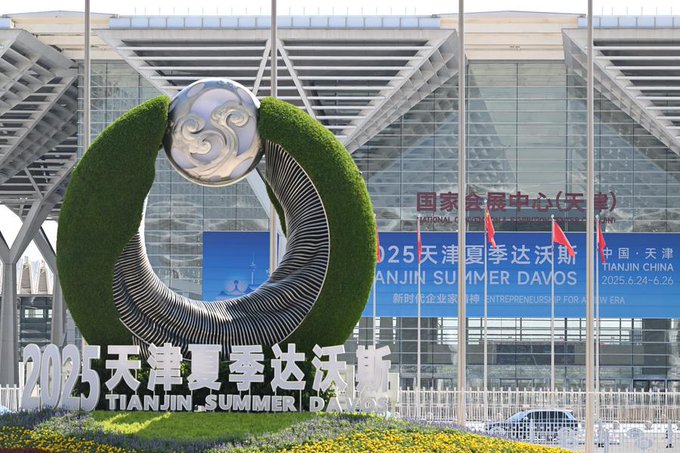China, long recognized as the world’s manufacturing giant, is now charting a new course—one defined by domestic consumption and quality-driven growth. At the 16th Annual Meeting of the New Champions (Summer Davos) in Tianjin, Premier Li Qiang declared that China is on track to become a “super-sized consumption powerhouse,” emphasizing the nation’s robust demand for upgraded consumer goods as it transitions toward high-income status.
The Shift from Manufacturing to Consumption
For decades, China’s economic miracle was built on its prowess as a manufacturing hub, exporting goods worldwide. However, as global trade faces increasing uncertainty and cross-border investment slows, Beijing is pivoting toward domestic demand as a key engine of growth. Premier Li highlighted that China’s economic foundation remains strong, but the focus is now on leveraging its vast consumer market to drive future prosperity.
This strategic shift is not just about boosting short-term spending. It reflects a broader transformation in China’s economic structure, aiming for high-quality, sustainable growth. “We are on track to become a high-income country supported by robust consumption upgrades,” Li stated, underscoring the government’s commitment to fostering a first-class, market-oriented, and internationalized business environment.

Consumption Upgrades and Changing Consumer Preferences
Recent data underscores the momentum behind China’s consumption upgrade. In May 2025, retail sales of consumer goods reached RMB 4.13 trillion (US$574.53 billion), a 6.4% year-on-year increase—the fastest pace since December 2023. This surge was driven by strong demand for upgrade-focused and lifestyle-related products, fueled by government incentives such as trade-in subsidies.
Key product categories experiencing exceptional growth include:
- Household appliances and audio-visual equipment (up 53% year-on-year)
- Communication equipment (up 33%)
- Cultural and office supplies (up 30.5%)
- Furniture (up 25.6%)
This trend reflects a significant shift in consumer mentality. Chinese shoppers are increasingly prioritizing quality over price, seeking premium, green, and intelligent products. The rise of membership-based retailers and the expansion of global brands like Sam’s Club further illustrate the appetite for higher-end goods and experiences among Chinese consumers.

The Drive Toward High-Income Status
China’s ambition to become a high-income country is underpinned by its enormous market potential. With a population exceeding 1.4 billion and a per capita GDP surpassing US$13,000, the country offers vast opportunities for both domestic and international enterprises. Urbanization continues to rise, expanding the base of middle- and high-income consumers eager for upgraded goods and services.
Government policies are playing a crucial role in this transition. Initiatives to stimulate household spending, support new consumption patterns, and promote digital and green consumption are central to China’s economic strategy. The central government has set a GDP growth target of about 5% for 2025, confident that steady economic expansion will reinforce the country’s ascent to high-income status.
Implications for Global Businesses and the World Economy
Premier Li’s message to the international community was clear: China’s consumption boom is not just a domestic story. As the nation opens its doors wider to foreign investment and deepens integration with global markets, businesses worldwide stand to benefit from access to China’s “mega-sized” consumer base. European, South Asian, and other international firms are already eyeing opportunities in China’s evolving market landscape.
Despite challenges such as price deflation in fast-moving consumer goods and lingering concerns over job security and real estate values, the overall outlook remains positive. The resilience of China’s consumer market, coupled with targeted government support, positions the country as a stabilizing force in a volatile global economy.
Conclusion
China’s emergence as a consumption powerhouse marks a pivotal chapter in its economic development. Under Premier Li Qiang’s leadership, the nation is embracing a future where domestic demand, quality, and innovation drive growth. As China moves closer to high-income status, its evolving consumer landscape will shape not only its own destiny but also offer new opportunities for global economic collaboration and prosperity.

